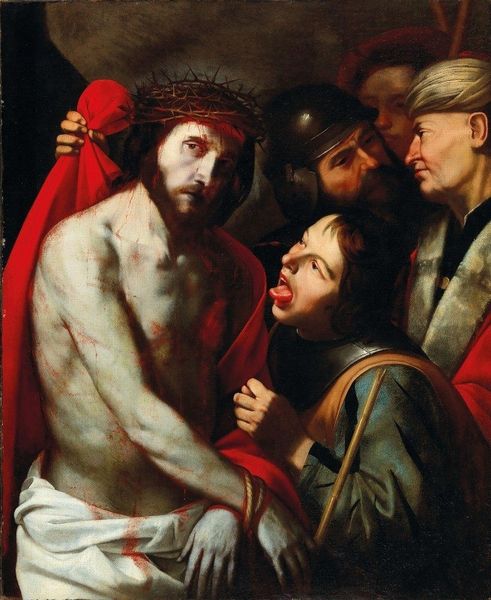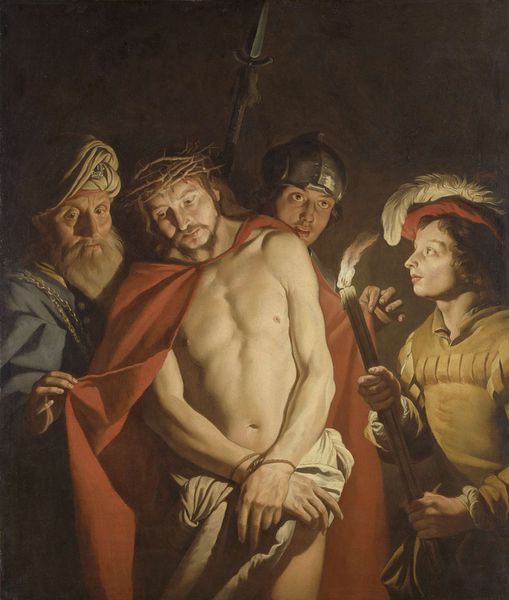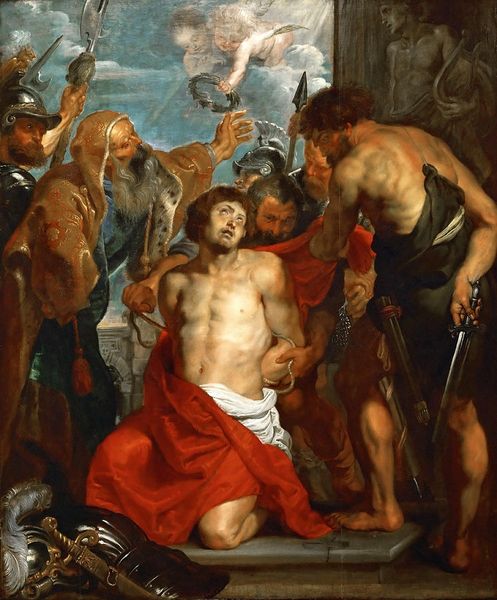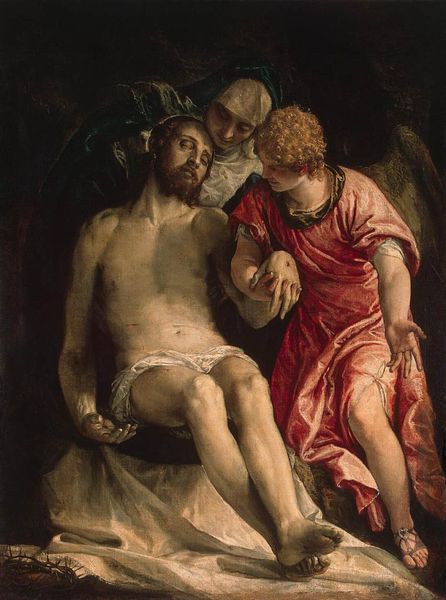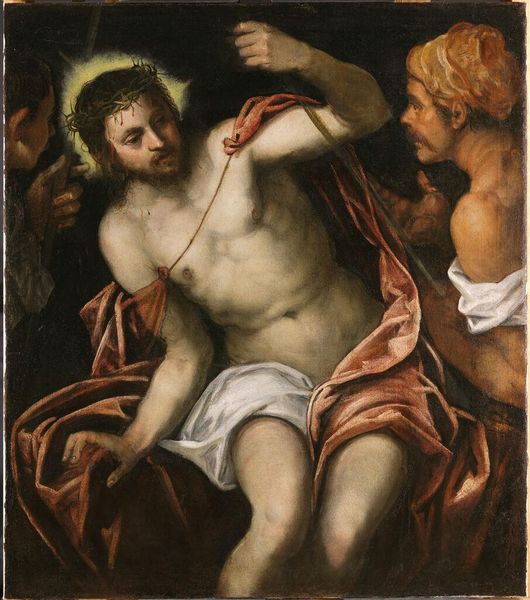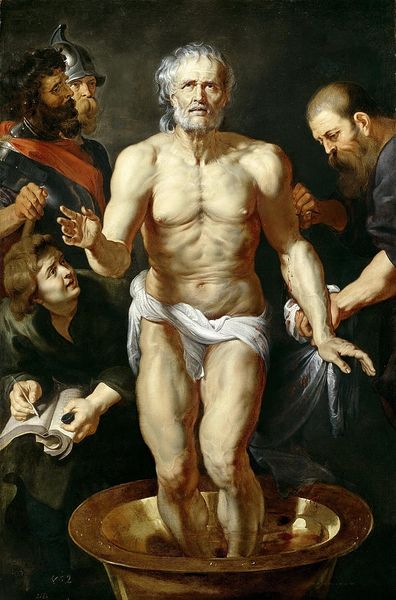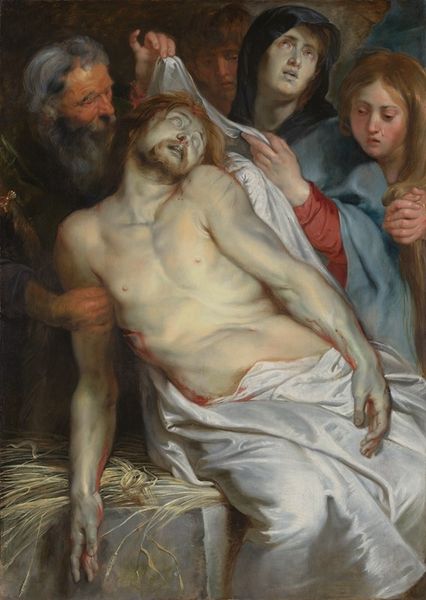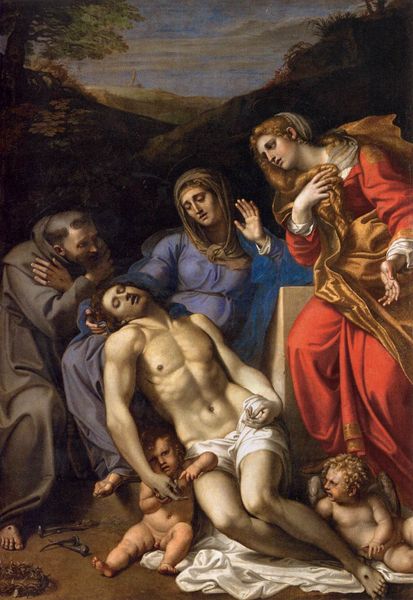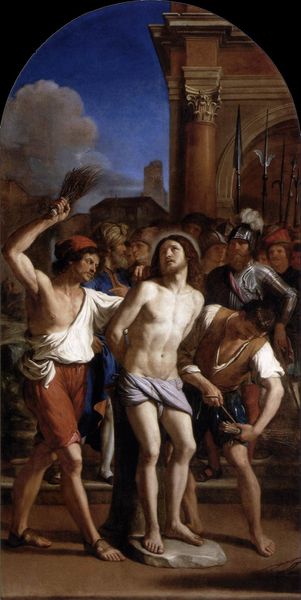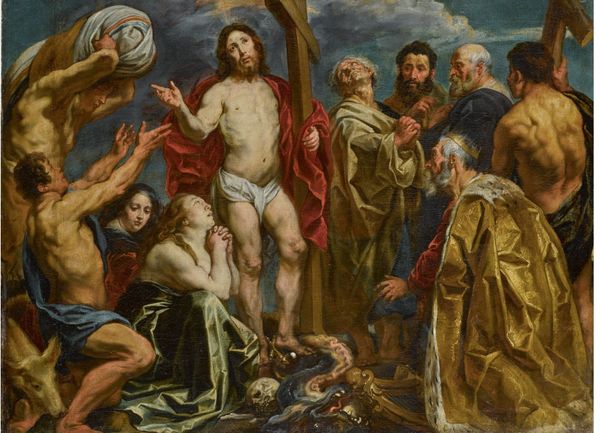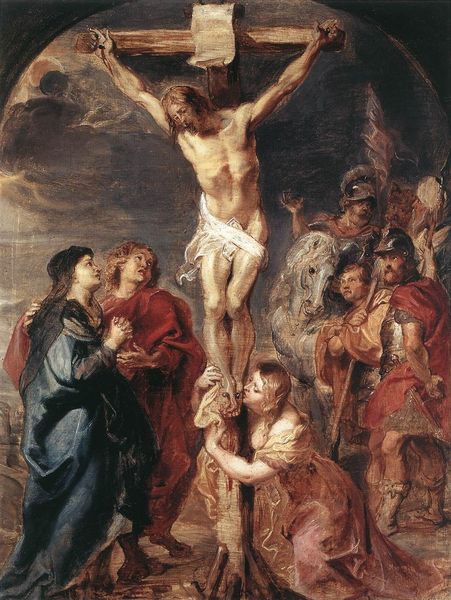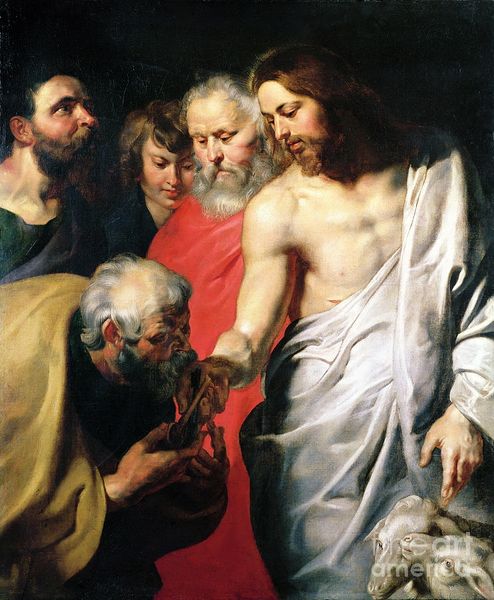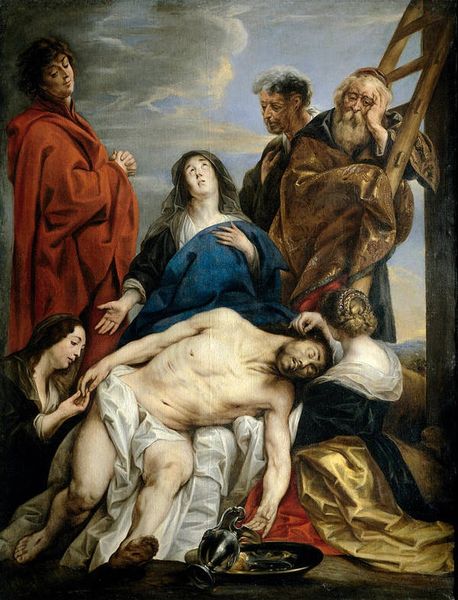
Copyright: Public Domain: Artvee
Peter Paul Rubens painted this “Ecce Homo” sometime in the early 17th century, as Europe was being torn apart by religious and political conflict. Rubens, a devout Catholic, often infused his art with religious themes, reflecting his personal beliefs and the cultural context of Counter-Reformation Europe. The painting depicts Jesus Christ after his arrest, presented to the crowd by Pontius Pilate with the words "Ecce Homo," or "Behold the Man.” The emotional intensity of this moment is palpable, with Christ portrayed as both divine and painfully human, complete with a crown of thorns and visible wounds. Rubens masterfully uses light and shadow to highlight Christ's suffering, inviting viewers to confront the complex themes of sacrifice, power, and injustice. In an era marked by religious persecution and social upheaval, "Ecce Homo" serves as a potent reminder of the human capacity for both cruelty and compassion, and the enduring power of faith in the face of adversity.
Comments
No comments
Be the first to comment and join the conversation on the ultimate creative platform.
